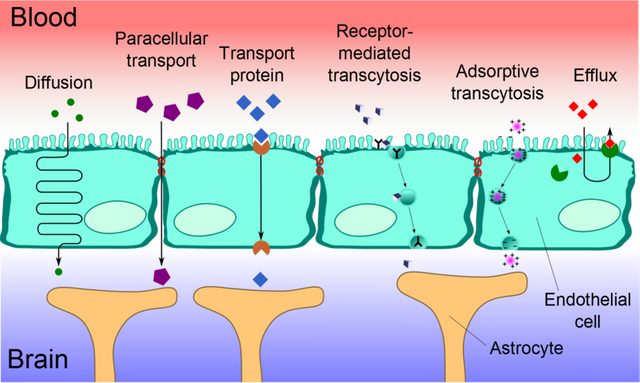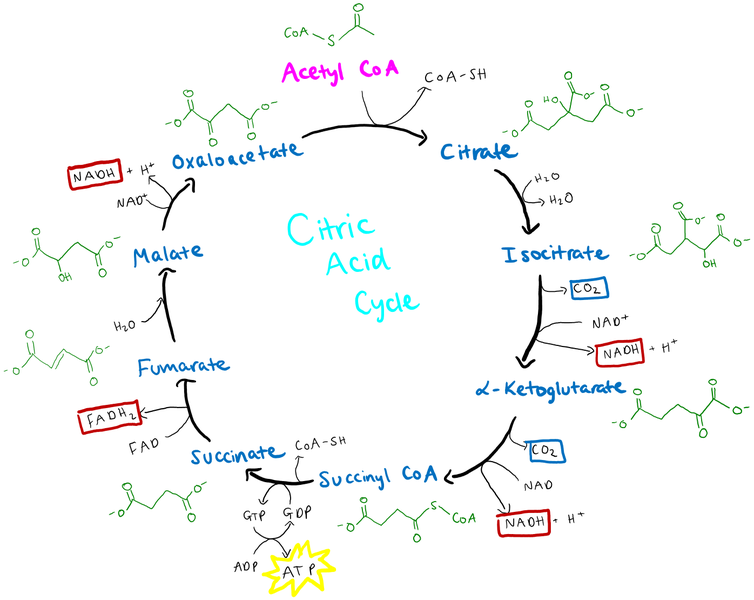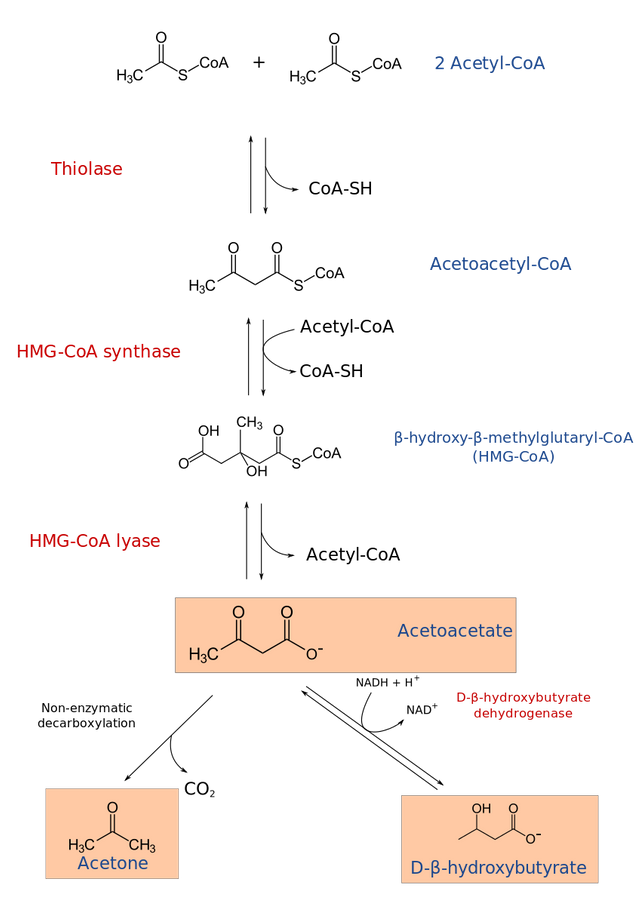Ketogenesis and Ketolysis: The sole reasons your brain doesn’t completely shut down during starvation.
Introduction
 Hunger is an integral part of life and the body has evolved ways to cope during these times (License: Public Domain]:
Pixabay
Hunger is an integral part of life and the body has evolved ways to cope during these times (License: Public Domain]:
Pixabay It is quite normal to be subjected to hunger and in extreme cases, starvation. Starvation however doesn’t automatically translate to death. I mean even when starving, humans can still carry out many processes of life like breathing, digestion, metabolism and even regular duties like writing, reading, washing and what have you.
It is well known that our bodies have devised ways of storing food or as I will like to say, biomolecules, for critical conditions like starvation. The body basically alternates between a fed state and a fasting state and has only evolved to stay functioning normal during these states.
The different organs of our body need constant supplies of nutrients to stay active. When we eat, it’s basically for the purpose of supplying different cells with biomolecules essential for survival. The cumulative effect is our organs being supplied with nutrients.
A cut or shortage in the supply of these nutrients to these organs can have disastrous outcomes on an individual which is basically why we need to eat to survive.
The main organ I’ll be paying much attention to, today, is the brain. Other organs will also come into the discussion. To start the article properly. I’ll like to introduce you to a special membrane possessed exclusively by the brain.
The Blood Brain Barrier: The Sole Reason behind The Nutritional-Selective Nature of The Brain
 The Blood Brain Barrier (License: CC-BY 3.0, Author: Kuebi]:
Wikicommons
The Blood Brain Barrier (License: CC-BY 3.0, Author: Kuebi]:
Wikicommons The brain, being a very vital organ of the body needs to be well taken care of. The brain like every other organ needs a constant supply of nutrients to stay performing. The brain however is quite selective in its nutrients uptake. This selectivity is largely due to the presence of a special membrane called the blood-brain barrier.
The blood brain barrier is a membrane formed by the cells that line the internal surface of the blood vessels (the endothelial cells) found in the brain. This membrane separates the blood from the brain and strictly allows selective passage of substances vital for the brain. In essence, the blood brain barrier can Be viewed as a semi-permeable membrane.
The possession of this barrier by the brain has been instrumental for preventing its attack by several pathogens that can be found in blood. Very few pathogens like the Meningococcal bacteria can alter the blood brain barrier by creating holes in the blood brain barrier making it porous in the process, paving way for the attack by pathogens of all sorts.
This barrier doesn’t just stop pathogens. It goes overboard to stop certain nutrients. Basically, the blood-brain barrier (BBB) only allows lipid soluble substances like hormones and certain drugs to pass through it as well as biomolecules that have transporters present on this BBB.
This is the reason why only very small molecules, certain polypeptides and glucose can pass though the BBB. Glucose, however, is the only one which is nutritionally beneficial to the brain. Glucose is a large molecule but thanks to its transporter, GLUT-1, which is largely present in the blood brain barrier, it actually gains access to the brain.
This therefore implies that of all possible nutrients one could take, only the carbohydrate, glucose can be useful to the brain.
So are our proteins and lipids of no use to the brain in anyway ?
 The TCA cycle (License: CC-BY-SA 4.0, Author: Krishnabp]:
Wikicommons
The TCA cycle (License: CC-BY-SA 4.0, Author: Krishnabp]:
Wikicommons Well, technically they are. Thanks to the tricarboxylic acid cycle and a special process (which is the next installment in my chemistry and metabolism of biomolecules series) known as gluconeogenesis, lipids and proteins can be relevant to the brain.
In a more proper sense, the fatty acids and amino acids which make up the lipids and proteins are more relevant to the brain. They do not however just go to the blood brain barrier and demand a gate pass. That would be preposterous. They take on a new form. Actually, they impersonate glucose.
The TCA cycle offers a point for amino acids and fatty acids to be siphoned into, in the build up to gluconeogenesis which is the production of glucose. Actually, in proper biochemical terms, gluconeogenesis is the synthesis of glucose from non-carbohydrate sources. This implies that amino acids and fatty acids can be converted into glucose directly through this pathway. So, gluconeogenesis offers a second point for amino acids and proteins to be involved in the production of glucose.
This glucose can just go to the blood brain barrier and get a pass which is it’s constitutional right. Quite amazing I’ll say.
Gluconeogenesis is very dependent on the availability of oxaloacetate which is a TCA cycle intermediate that is vital in gluconeogenesis.
Oxaloacetate which is converted to phosphoenolpyruvate (PEP) during gluconeogenesis can be depleted during excess starvation as there is excess gluconeogenesis to meet up the ever increasing glucose demands. The consequence of this, is a suppression of gluconeogenesis with time as oxaloacetate will most likely get depleted.
Oxaloacetate is converted to citrate via its condensation with acetyl CoA starting off the first of eight steps in the TCA cycle. This makes it’s availability important for the continuation of the TCA cycle.
What happens therefore when gluconeogenesis is suppressed, glucose is unavailable or available in insufficient amounts and the TCA cycle is in recess ?
This is where a very special pathway comes into play.
Ketogenesis: The Brain’s Saving Grace in Periods of Prolonged Starvation.
 The pathway of Ketogenesis (License: Public Domain]:
Wikicommons
The pathway of Ketogenesis (License: Public Domain]:
Wikicommons Ketogenesis is simply the formation of ketone bodies. Ketone bodies are produced from acetyl coA. Under normal conditions, the acetyl CoA produced during glucose breakdown and fatty acid beta oxidation combine with oxaloacetate to produce citrate, indirectly going into the TCA cycle leading to the ultimate production of energy in the form of ATP, GTP and reducing equivalents like NADH and FADH2.
During prolonged starvation, it’s a different ball game entirely. First of all, the glycogen stores are depleted and this happens in 24 hours only ! Glucose is used up excessively without being replaced sufficiently. The use-up exceeds the replacement as it will take a glucose supply from diets to match up this use-up. In a case of starvation, this external glucose supply through diet is unavailable.
The fatty acids will now have to act as an alternative source of energy. First of all, they are converted to acetyl coA. Just like glucose. Normally, every organ can just directly convert fatty acids into acetyl coA and siphon it into the TCA cycle as earlier explained leading to the production of energy. Did i actually say every ? Nope, not every. The brain cannot.
The brain, being a very vital organ, needs to be supplied a glucose alternative during this starvation period. This is where the liver comes in. The liver actually acts in a selfless manner in this case. It produces special molecules known as ketone bodies which can be used by the brain in place of glucose. Why is it selfless ? It is so because it has absolutely no way of utilizing these ketone bodies for its own needs. It lacks an enzyme vital for the utilization of ketone bodies. This enzyme is β-ketoacyl-CoA transferase.
The liver supplies this ketone bodies to the brain, heart and muscles that need it but here, I’m particularly focused on its supply to the brain.
The ketone bodies can pass through the blood brain barrier so they can be utilized by the brain. Since they are basically modifications of acetyl CoA, they can be converted back to acetyl CoA and siphoned into the TCA cycle by the brain cells, thus leading to the production of energy. This is a life hack imo.
The Biochemistry of Ketone Bodies Formation
The cell is known to carry out several processes relevant for life. Cells possess organelles which carry out these processes. The ribosomes have been shown to be sites for protein synthesis. The mitochondria has been shown to play a role in oxidative phosphorylation and electron transport chain. The cytosol has been shown to house enzymes necessary for glycolysis.
This has given rise to the idea of compartmentalization (a concept where similar enzymatic reactions are regulated by taking place in different compartments). Compartmentalization comes into play where an enzyme is hugely involved in two different pathways. This is seen where Aspartate transcarbomoylase is necessary for the formation of pyrimidine and urea. Aspartate transcarbomoylase orchestrates urea synthesis when acting in the mitochondria and pyrimidine synthesis when acting in the cytosol.
The concept of compartmentalization comes into play in ketone bodies formation (Ketogenesis). This arises due to the fact that the intermediate, HMG-coA (β-hydroxy-β-methylglutaryl-CoA) is involved in both Ketogenesis and cholesterogenesis (synthesis of cholesterol). The former takes place in the mitochondria and the latter, in the cytosol. So acetyl coA only needs to be transported between these compartments and acted upon by HMG coA synthase to generate HMG-coA leading to the synthesis of either ketone bodies or cholesterol as deemed necessary by the biological system.
With that being understood, I’ll give a quick run down of the processes of Ketogenesis and ketolysis. Ketogenesis starts with the fusion of two acetyl coA molecules to yield acetoacetyl-coA catalyzed by the enzyme, thiolase.
The newly formed Acetoacetyl coA is acted upon by HMG coA synthase to yield HMG coA which is then converted to Acetoacetate and acetyl coA by action of the enzyme HMG coA lyase. HMG coA synthase and lyase are mitochondrial enzymes and marked increases in their concentrations have been demonstrated during fasting.
Acetoacetate can lead to the formation of acetone via the enzyme acetoacetate decarboxylase or it can just occur spontaneously. Acetoacetate can also lead to the formation of β-hydroxybutyrate by action of the enzyme β-hydroxybutyrate decarboxylase.
The three ketone bodies therefore are; acetoacetate, acetone and β-hydroxybutyrate. But it’s one thing for these bodies to be produced, it’s another thing for them to be utilized. This takes us to the next vital part.
Ketolysis: The Reason why only extrahepatic tissues like the brain, heart and muscle can utilize ketone bodies
The liver being the major producer of the ketone bodies can not utilize it. Unfair I will say but the extrahepatic issues (tissues that are located outside the liver) cannot be blamed. They possess what the liver does not possess. An enzyme known as β-ketoacyl-CoA transferase. This enzyme is necessary in the utilization of ketone bodies and I will show where it comes in.
For starters, acetoacetate is the main ketone body which is utilized by the extrahepatic tissues. β-hydroxybutyrate is converted to acetoacetate by action of β-hydroxybutyrate dehydrogenase, a reversal of the reaction mentioned above, giving acetoacetate. Acetone has not been shown to be reversely produced in the way other ketone bodies are and are given off during breathing making them solely responsible for the fruity smell of the breath of people with excess ketone bodies (e.g diabetics).
Acetoacetate needs to be activated before it can go into reaction. The enzyme, β-ketoacyl-CoA transferase, catalyzes the donation of a coA group from succinyl coA (gotten from the TCA cycle) to acetoacetate leading to the formation of succinate and acetoacetylcoA.
This Acetoacetyl coA is broken down to two acetyl coA molecules by action of the enzyme thiolase. The acetyl coA molecules can go into the TCA cycle in these extrahepatic cells to yield energy. Matter of factly speaking, this yields 22 ATP and 2 GTP molecules. The brain certainly can work effectively with this amount of energy.
Summary
The brain is like the last child of a family. Preferential treatment must be given to it. Many organs work their asses off just to please it. The liver is just one of those several organs that do this. Till next time. Hope you learned something today.
References
Ketogenesis | An Overview. Retrieved on May 14th, 2018.
Ward, Colin. Ketone body metabolism [internet]. 2015 Nov 18; Diapedia 51040851169 rev. no. 29. Available from: https://doi.org/10.14496/dia.51040851169.29
Ketogenesis | Definition, Pathway, Diet & Synthesis. Retrieved on May 14th, 2018.
Ketogenesis. Retrieved on May 14th, 2018.
Blood Brain Barrier. Retrieved on May 14th, 2018.
Lehninger, A. L., Nelson, D. L., & Cox, M. M. (2000). Lehninger principles of biochemistry. New York: Worth Publishers. pp. 650-652.
Chatterjea, M. N. (2012). Textbook of Medical Biochemistry. (8th Edition). Jaypee Brothers Medical Publishers. New Delhi. India. pp. 425-431.
Vasudevan et al. (2011). Textbook of Biochemistry. (6th Edition). Jaypee Brothers Medical Publishers. New Delhi. India. pp. 143-145.
Image Sources
All images are from pixabay and wikicommons licensed under creative commons and eligible for commercial use.
I'm a proud member of the steemstem community which promotes quality posts in the science, technology, engineering and mathematics fields on the steem blockchain mainly through interaction and engagement. Feel free to join us on discord here
Beautiful post i LOVE this topic. Its imposible to understand some diseases as the diabetic khetoacidosis without this information thx sir for sharing this very well written post. It hemos me alot to study medicine un the english lenguage.
Can u pliz keep doing this kind of post It helps me alot to learn english while learning medicine todo.
My pleasure man. Thanks for stopping by
This is a well detailed post......the brain has a lot of work to do, it is the first to detect decrease in blood glucose level in the body and in order to keep running, gluconeogenesis begins.
You have said it all bro.
Kudos!
Good one man. Thanks for the thoughtful comment and yeah, the brain is a workaholic
This post has been upvoted for free by @microbot with 0.1%!
Get better upvotes by bidding on me.
More profits? 100% Payout! Delegate some SteemPower to @microbot: 1 SP, 5 SP, 10 SP, custom amount
You like to bet and win 20x your bid? Have a look at @gtw and this description!
Another knowledge added to my library
But I cannot afford to stave ooo.... I love eating not just the food now 🙈
Thanks for this wonderful information. Just got refreshed that brain utilize ketones body from liver. Thanks @kingabesh
thanks for reading through man. Im glad you learned something
Nicely written. I have a question though, although not entirely related: What happens if we regularly skip breakfast?
Very true.
lol im not particularly sure but it would be wiser to contact a dietician or nutritionist. i have however read that having breakfast early and everyday is beneficial to health
Great post! Looking forward to more.